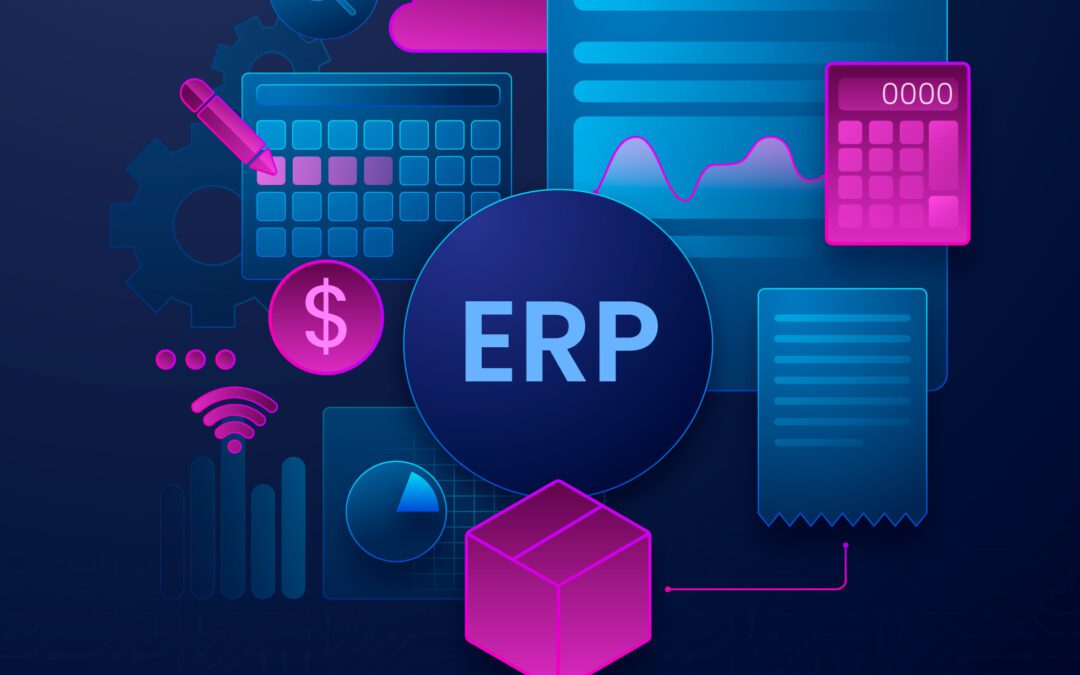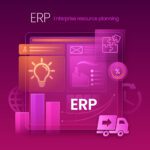In today’s digital-first business world, software systems drive efficiency, transparency, and cost reduction across departments. Two such powerful systems are E-Procurement solutions and Enterprise Resource Planning (ERP) systems. While they may appear to serve similar purposes—especially around procurement and supply chain management—they are fundamentally different in their scope, objectives, features, and implementation strategies.
In this comprehensive article, we’ll explore how e-procurement systems differ from ERPs, debunk common misconceptions, and help businesses make the right technology investment. Whether you’re a procurement manager, a CFO, or a digital transformation leader, this guide will give you a clear roadmap to understand the divergence and synergy between these two powerful tools.
Table of Contents
-
What Is an ERP System?
-
What Is an E-Procurement System?
-
Core Functional Differences Between ERP and E-Procurement
-
Scope and Coverage: ERP vs E-Procurement
-
Procurement Process Comparison in Both Systems
-
Integration Capabilities: Best-of-Breed vs All-in-One
-
Cost Efficiency and ROI
-
Real-Time Supplier Collaboration and Transparency
-
Scalability and Flexibility in Business Growth
-
Compliance, Audit Trails, and Risk Management
-
Use Cases: When to Choose E-Procurement Over ERP?
-
Can E-Procurement Integrate With ERP?
-
Best Practices for Implementing E-Procurement With ERP
-
Leading E-Procurement Platforms to Consider
-
Conclusion
1. What Is an ERP System?
Enterprise Resource Planning (ERP) is an integrated software solution designed to consolidate and manage core business processes—including finance, human resources, inventory, manufacturing, and procurement—into a single unified system.
Popular ERP platforms include:
-
SAP
-
Oracle NetSuite
-
Microsoft Dynamics 365
-
Infor
-
Workday
ERPs are typically modular systems that aim to centralize data and provide an overarching view of the business. Procurement is one of the modules—among many—that ERPs offer.
📌 Note: While ERP systems may include procurement features, they are not specialized for it.
2. What Is an E-Procurement System?
E-Procurement (Electronic Procurement) is a specialized digital solution dedicated to automating the procurement lifecycle, from requisition to purchase order, supplier selection, invoice processing, and contract management.
Key features often include:
-
Online supplier catalogs
-
Purchase requisition workflows
-
Electronic RFQs, RFPs, and RFIs
-
Vendor portals and bid evaluation
-
Purchase order (PO) automation
-
Invoice matching and approvals
E-Procurement platforms like:
-
Coupa
-
SAP Ariba
-
Jaggaer
-
Ivalua
-
Zycus
are purpose-built to streamline procurement workflows, ensure compliance, and reduce manual processes.
3. Core Functional Differences Between ERP and E-Procurement
| Feature | ERP | E-Procurement |
|---|---|---|
| Primary Focus | End-to-end business management | Procurement and sourcing |
| Procurement Scope | Basic purchasing | Comprehensive procurement lifecycle |
| User Interface | Complex, not user-friendly | Intuitive and procurement-centric |
| Speed of Implementation | Longer due to enterprise-wide integration | Faster due to focused scope |
| Customization for Procurement | Limited | Highly configurable |
| Vendor Management | Often missing or limited | Centralized and robust |
| Spend Visibility | Partial, mixed with other modules | 100% procurement-specific visibility |
In short, ERP is like a jack-of-all-trades, while e-procurement systems are masters of procurement.
4. Scope and Coverage: ERP vs E-Procurement
ERP systems span across departments—covering financials, HR, inventory, CRM, manufacturing, and procurement, among others. Their strength lies in data unification.
E-procurement tools, on the other hand, go deep instead of wide. They cover:
-
Supplier discovery and onboarding
-
Contract lifecycle management (CLM)
-
Strategic sourcing
-
Tactical procurement (spot buys)
-
Budget control and approval hierarchies
So, while ERPs manage procurement as a function, e-procurement systems manage procurement as a strategy.
5. Procurement Process Comparison in Both Systems
Let’s compare the procure-to-pay process in both systems:
In ERP:
-
Requisition request (manual or semi-automated)
-
Manager approval
-
PO creation
-
Supplier confirmation
-
Goods receipt
-
Invoice processing
In E-Procurement:
-
Guided buying from approved catalogs
-
Automated multi-level approvals
-
PO generation and dispatch to vendor
-
Real-time order tracking
-
3-way invoice matching (PO, invoice, delivery)
-
Spend analysis and supplier scoring
As seen, e-procurement automates and enhances every step with procurement-specific intelligence.
6. Integration Capabilities: Best-of-Breed vs All-in-One
E-Procurement platforms are best-of-breed tools, meaning they focus solely on procurement but can integrate seamlessly with:
-
ERP systems (SAP, Oracle, etc.)
-
Finance tools
-
Analytics dashboards
-
Compliance platforms
Modern APIs and middleware make integration easier than ever.
ERP systems try to offer everything in one suite, but this often leads to limited features in each domain, especially in fast-evolving areas like procurement.
7. Cost Efficiency and ROI
E-Procurement solutions generally offer higher ROI in procurement functions because they:
-
Automate routine tasks
-
Reduce maverick spending
-
Enable better supplier negotiations
-
Enhance compliance and audit readiness
While ERP systems may offer broader ROI over time, initial implementation and training costs are often high. E-procurement systems are faster to deploy and can yield quick wins in spend control.
8. Real-Time Supplier Collaboration and Transparency
Unlike traditional ERP systems, which treat suppliers as external entities, modern e-procurement platforms enable:
-
Vendor portals
-
Self-service catalog updates
-
Status updates on deliveries
-
Invoice dispute resolution
-
Performance ratings
This leads to greater trust, better SLAs, and strategic supplier relationships—vital for competitive edge.
9. Scalability and Flexibility in Business Growth
As businesses grow, their procurement complexity scales. E-procurement tools provide:
-
Modular scalability
-
AI-powered analytics
-
Custom workflows by department, region, or category
-
Cloud-native infrastructure
ERPs often require rigid upgrades or enterprise-wide changes, which slow agility.
For growing businesses, starting with an e-procurement platform that integrates with an ERP can offer more flexibility and lower risk.
10. Compliance, Audit Trails, and Risk Management
Procurement is a high-risk area vulnerable to:
-
Fraud
-
Non-compliance
-
Rogue spending
E-Procurement systems offer:
-
Digital audit trails
-
Built-in compliance checks
-
Spend policy enforcement
-
Supplier risk scoring
ERP systems usually lack these procurement-specific governance features, making e-procurement tools essential for regulated industries.
11. Use Cases: When to Choose E-Procurement Over ERP?
You should prioritize e-procurement if:
-
Procurement is a major spend category
-
You need supplier performance data
-
Your team is manually managing RFQs and POs
-
You lack real-time spend visibility
-
You operate in a regulated industry (pharma, finance, defense)
ERP alone may suffice if:
-
You have a very small procurement volume
-
You only need basic PO management
For most mid-to-large businesses, the ideal solution is integration, not substitution.
12. Can E-Procurement Integrate With ERP?
Absolutely. In fact, this is the recommended model for most enterprises.
For example:
-
Coupa integrates with SAP, NetSuite, and Oracle
-
SAP Ariba connects with SAP ECC and S/4HANA
-
Jaggaer supports integrations with PeopleSoft and Microsoft Dynamics
With modern cloud platforms and APIs, integration is smooth and ensures data consistency between procurement and finance.
✅ Learn more: Coupa Integrations
13. Best Practices for Implementing E-Procurement With ERP
To ensure a successful implementation:
-
Define clear procurement goals (cost savings, efficiency, compliance)
-
Map current procurement workflows
-
Choose an e-procurement platform that offers pre-built ERP connectors
-
Train procurement staff thoroughly
-
Monitor KPIs post-implementation like PO cycle time, contract compliance, etc.
14. Leading E-Procurement Platforms to Consider
Here are some top-rated platforms and their strengths:
| Platform | Strengths |
|---|---|
| Coupa | Spend optimization, intuitive UI |
| SAP Ariba | Deep ERP integration, large supplier network |
| Jaggaer | Strong in education and public sector |
| Ivalua | High configurability, total procurement suite |
| Zycus | AI-powered insights, strong compliance tools |
Make sure to test vendor demos, check for industry fit, and evaluate integration support before finalizing.
15. Conclusion
While ERP and e-procurement systems may intersect in the area of purchasing, they are not interchangeable. ERP systems are excellent for enterprise-wide resource planning, but they lack the depth, flexibility, and procurement-specific intelligence offered by modern e-procurement platforms.
E-Procurement tools are designed for the modern procurement team—focused on automation, compliance, and supplier relationships. Integrating an e-procurement solution with your ERP offers the best of both worlds: strategic procurement operations supported by enterprise-level data flow.
If you’re serious about streamlining procurement, reducing costs, and gaining transparency, investing in a dedicated e-procurement system is not a luxury—it’s a necessity.






